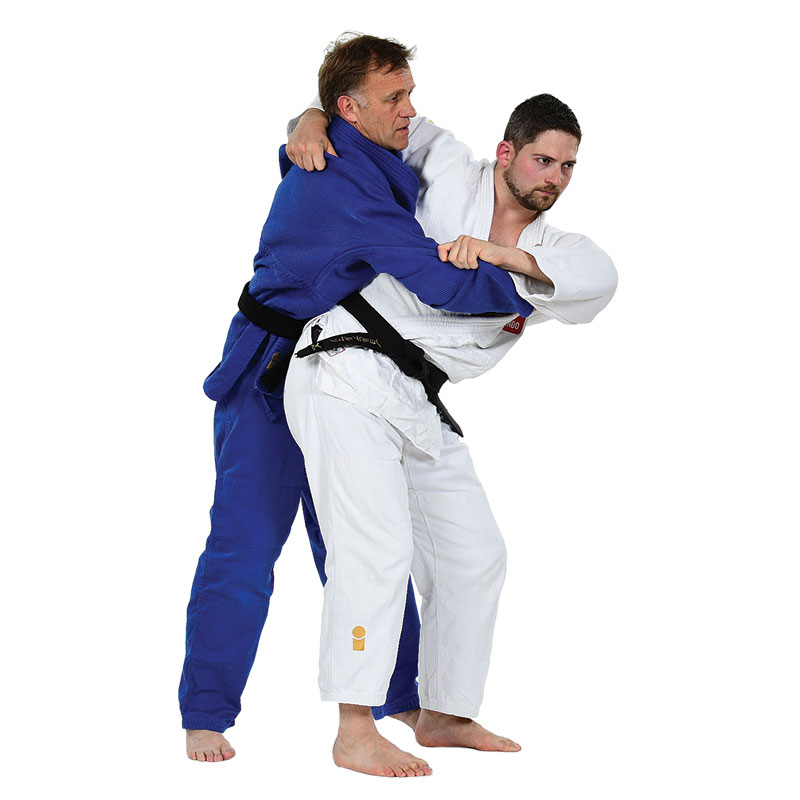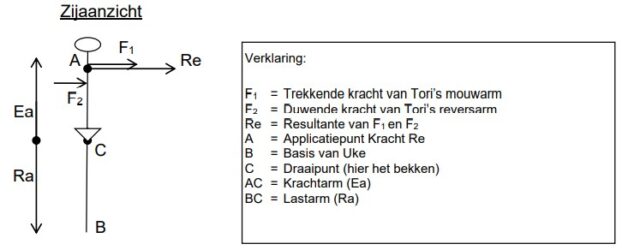Koshi-guruma – 腰車 – Hip Wheel
Classification: Nage-waza (throwing technique) – Koshi-waza (hip technique)
Difficulty: ★☆☆☆☆ (Basic–Intermediate level)
Kodokan-approved technique
Technical Description
Koshi-guruma, or “hip wheel,” is a dynamic hip throw used to lift and rotate the opponent around the waist. Tori begins by breaking uke’s balance (kuzushi) forward or toward uke’s right front corner. Tori then enters with the right hip tightly placed against uke’s pelvis.
Unlike O-goshi, tori wraps the right arm around uke’s neck, gripping the collar or upper back, while maintaining control of uke’s sleeve with the left hand. By rotating the upper body and using the hips as a pivot, tori throws uke in a wide circular arc over the hips and to the mat.

Biomechanical Principles of Koshi-guruma
Koshi-guruma functions as a rotational lever:
-
A – Direction of Force: Tori’s right arm pulls and guides uke’s upper body around the neck and shoulder area.
-
C – Fulcrum: The hip acts as the pivot point, positioned against the front of uke’s pelvis.
-
Re – Action Force: Tori drives uke over the hip using a circular, sweeping motion.
The grip around the neck adds leverage but also requires careful control to ensure safety and correct posture.

Did You Know?
The word “guruma” (車) means “wheel” in Japanese. It appears in various techniques where a specific part of the body acts as the rotating axis for the throw. Examples include:
-
Kata-guruma – Shoulder wheel
-
Hiza-guruma – Knee wheel
-
O-guruma – Large wheel over the extended leg
-
O-soto-guruma – Major outer wheel using the leg in a backward sweep
-
Te-guruma – Hand wheel (often a lifting variation)
-
Yoko-guruma – Side wheel (a sacrifice technique)
Each of these “wheel” throws shares the common idea of rotation around a central axis, but they differ in the fulcrum used—be it the shoulder, knee, leg, arm, or side of the body.